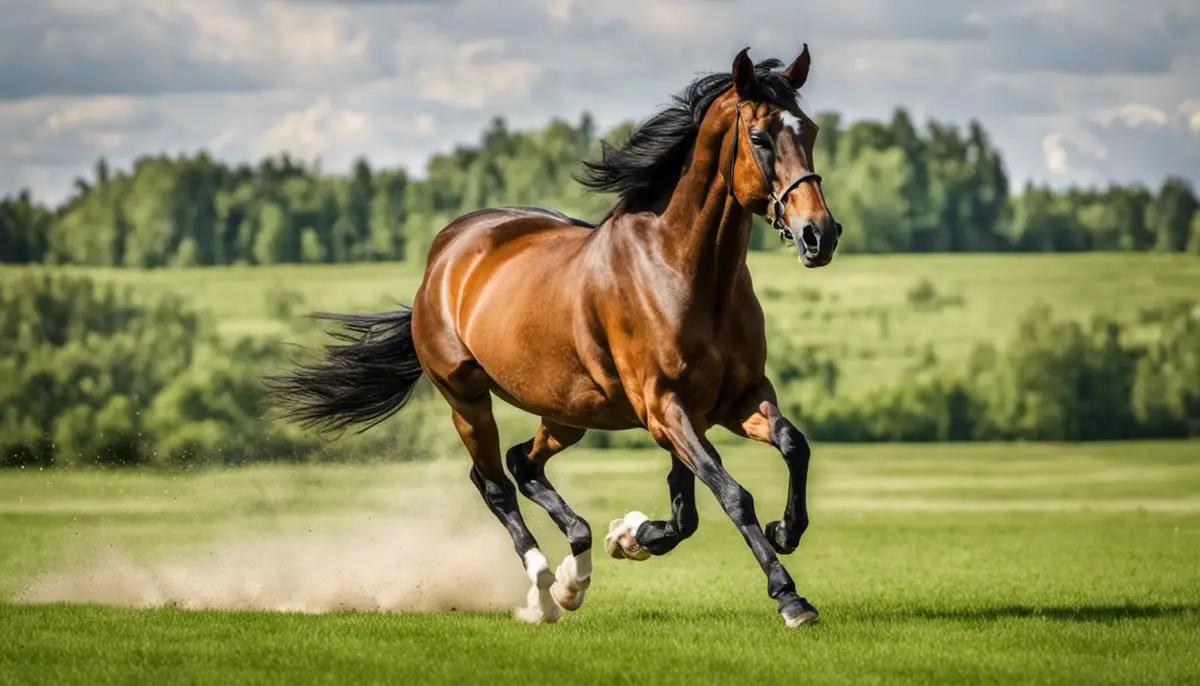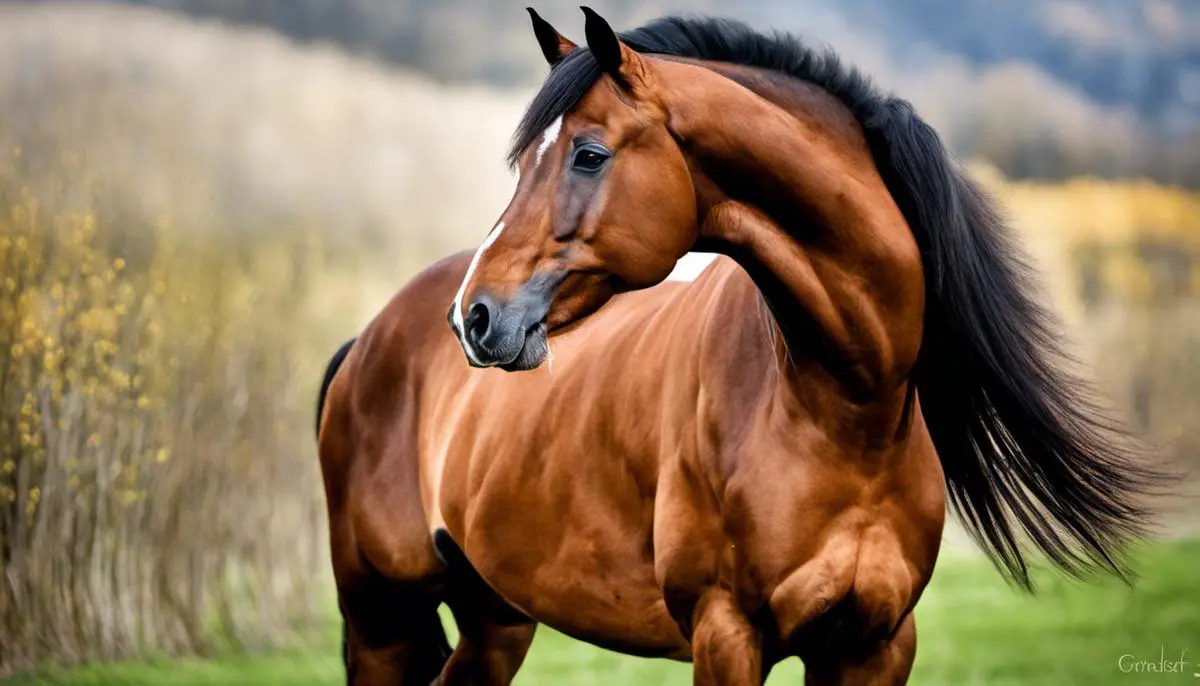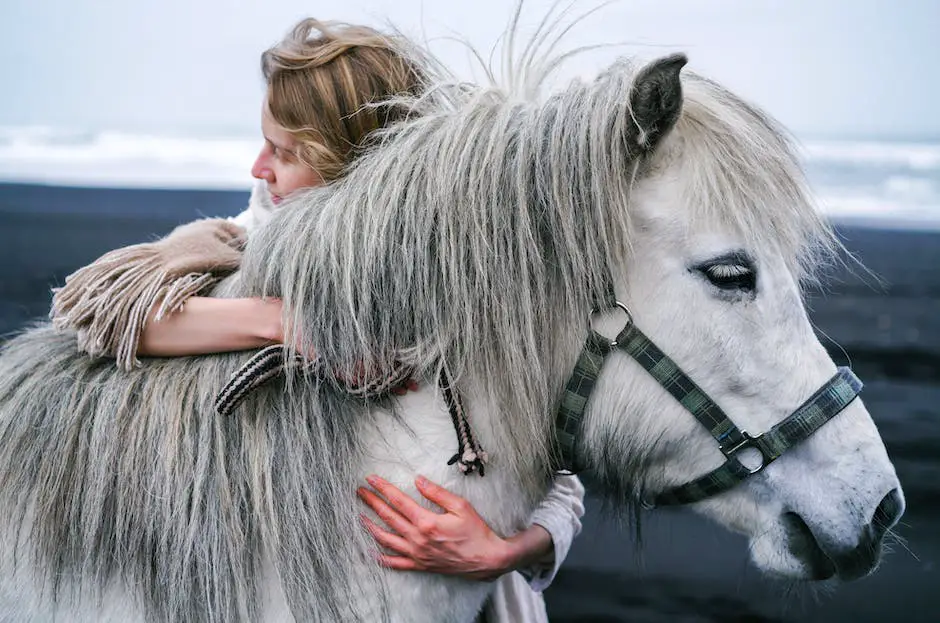The power, grace and endurance of the Russian Warmblood Horse breed has captured the hearts of horse lovers worldwide. These magnificent creatures, boasting a rich heritage and distinct personality traits, have consistently proven themselves to be valuable assets in a variety of equestrian endeavours. While their origins are deeply rooted in the heart of Russia, their influence has expanded to all corners of the equine world, illustrating the global admiration for this breed’s exceptional qualities. The aim of this discourse is to delve deeply into understanding the Russian Warmblood, a breed whose strength, intelligence and versatility continues to astound those lucky enough to encounter them.
Table of Contents (Horspedia)
Origin and History of the Russian Warmblood
The Origin of the Russian Warmblood Horse Breed
The Russian Warmblood breed has its origins in the late 18th century. The breed’s development took place at various Russian horse breeding farms, notably at the Khrenovskoy Stud Farm. Initially, the breed was developed to meet the Russian aristocracy’s demand for elegant, well-mannered horses to use in riding and light draft work.
Early Breed Development
The early foundation of the Russian Warmblood involved various local breeds like the Karabakh, Don and Orlov Trotter horses. These horses were bred with imported Western European horses, such as the English Thoroughbred, the Arab, and the Orlov Trotter, in an effort to refine and improve the breed. Additionally, in the early 20th century, German Warmblood breeds, including the Hanoverian and Trakehner, were also introduced to the bloodline to enhance the breed’s versatility and performance.
Impact of the Russian Revolution and World Wars
The Russian Revolution in 1917 and the subsequent First and Second World Wars greatly impacted the development of the Russian Warmblood breed. Many breeding farms were destroyed in these upheavals, leading to the loss of decades of selective breeding progress. Post-war, careful breeding efforts were made to rebuild the breed, focusing on producing a versatile horse that could excel in various equestrian disciplines.
Post-War Development and Soviet Influence
Under Soviet rule, the development of the Russian Warmblood breed was heavily supported by the state. The Soviet government organized breeding and selection programs in the 20th century to enhance the size, strength, and sporting capabilities of the breed. They aimed at creating an athletic horse that could compete internationally in dressage, show jumping, and three-day eventing. However, efficiency and economical traits, such as hardiness, longevity, and fertility, could not be overlooked due to the agricultural needs of the country.
Modern Russian Warmblood
Today’s Russian Warmblood is a result of centuries of careful selective breeding and adaptation to diverse climatic conditions, which makes the breed adaptable to different environments. They are known for their versatility, strength, endurance, and trainable temperament. Russian Warmblood horses have achieved international recognition for their performance in various equestrian sports, particularly in dressage and show jumping.
Preservation of the Breed
In recent years, efforts have been made to preserve and promote the Russian Warmblood breed’s unique qualities. The All-Russian Research Institute of Horse Breeding is currently overseeing the breed’s conservation. They continue to conduct research on genetic diversity, pedigree analysis, and qualitative selection to improve and sustain this unique breed.
The tale of the Russian Warmblood, from a horse bred exclusively for Russian nobility to a renowned sporting breed on the global scene, tells a fascinating story of visionary breeders, adaptation to historical happenings, and meticulous selection over the centuries. The result is the superb breed we witness today.

Characteristics and Traits of the Russian Warmblood
Physical Attributes
Mentioning the physical traits of the Russian Warmblood, or also called the Russian Riding Horse, this breed falls into the medium-heavy warmblood category. This breed stands tall, ranging between 15.3 to 17.3 hands, exhibiting strength and authority. Thanks to the rigorous selective breeding involving Don, Thoroughbred, and Arabian saddle horses, the Russian Warmblood presents a well-sculpted muscular figure. The breed is most often adorned with bay, black, or gray coats. It possesses an alluring, well-balanced head, typically showing a straight to slightly concave profile. The breed is admired for its elongated neck, profound chest, sturdy body marked by a strong back, and a muscular, gently sloping croup. The Russian Warmblood stands tall on solid hooves, supported by long legs and displays a well-adjusted tail.
Behavioural Characteristics
Russian Warmblood horses are popular for their docile and obedient nature. They are generally known to be calm, friendly, and intelligent, which makes them easy to train and handle. They are highly appreciated for their eagerness to please and often form strong bonds with their handlers. Despite their gentle demeanor, these horses are incredibly energetic, demonstrating a wonderful blend of temperament, stability, and strength.
Performance Characteristics
Due to the diverse genetic makeup that includes English Thoroughbred, Arabian, and Don horse bloodlines, Russian Warmblood horses exhibit versatile performance capabilities. Historically, they were bred for use in agriculture and transportation. But over the years, these horses have shown excellent abilities in dressage, jumping, and eventing. They have a well-established reputation in the competitive sports world due to their agility, quick learning, prowess, and tremendous stamina.
Preferences: Adaptability and Climate Tolerance
Russian Warmblood horses are hardy and have a high degree of adaptability. They have been bred to cope with the harsh climates of Russia, which includes intense cold and heat. As such, they do well in various weather conditions and can do equally well in pastures or in stalls.
Strengths and Unusual Traits
- Russian Warmbloods are renowned for their robust health and long lifespan, exhibiting a resistance to many equine diseases that often plague other breeds.
- A noticeable attribute is their swift growth rate; it’s not uncommon for these Warmblood foals to approach their adult stature within their first twelve months.
- A lasting legacy of their Arabian forebears is their commanding presence coupled with an almost ethereal trot that truly sets them apart.
- Their illustrious Thoroughbred lineage has blessed them with a symbiotic blend of speed, endurance, and power – attributes that set them on a pedestal in various equestrian sports.

Breeding and Use of Russian Warmbloods
Breeding Practices of Russian Warmbloods
Since their genesis in the 1800s, Russian Warmbloods have been the results of careful crossbreeding between local mares and European stallions, including but not limited to Hanoverians, Holsteins, Trakehners, and Thoroughbreds. Endurance, physical prowess, and a calm temperament for both riding and carriage driving were, and still are, the desired outcomes of these breeding practices.
In the present day, this approach has evolved to be more sophisticated with breeders meticulously choosing particular horses to sustain the distinguished attributes of strength, stamina, and temperament inherent to the Russian Warmblood. As an open studbook, the inclusion of external breeds is permissible, given they meet inflexible quality standards, facilitating continuous enhancement and evolution of the Russian Warmblood lineage.
Caring for Russian Warmbloods
Russian Warmbloods are recognized for their adaptability and resilience, partly due to the tough climatic conditions in Russia. Nevertheless, they require basic horse care, including a balanced diet, regular exercise, proper medical attention, and adequate shelter.
Nutritionally, they consume large quantities of high-quality roughage, supplemented with grains or commercial feeds. Regular exercise is crucial for these horses, as it keeps them fit and maintains their mental wellbeing. They are prone to some genetic diseases, like osteochondritis, making regular veterinary check-ups essential.
Roles and Activities of Russian Warmbloods
As versatile equines, Russian Warmbloods have a variety of roles. Historically, they were used as harness and carriage horses, known for their strength and endurance. With globalization, many have transitioned into sport horses, excelling particularly in dressage and show jumping.
In dressage, Russian Warmbloods are celebrated for their rhythmic and elevated gaits, balance, and agility – all fundamental to successful dressage performance. Notable Russian Warmbloods have achieved high rankings in international dressage competitions.
In show jumping, these horses demonstrate their power and athleticism. Their calm temperament, combined with agility and strength, makes them ideal for this sport, maneuvering over large obstacles with ease and precision.
Russian Warmbloods are also used for recreational riding due to their good-natured temperament and comfortable gaits. They are even seen working in therapeutic riding programs, where their gentle nature and steady gait makes them ideal therapy horses.
The Russian Warmbloods are renowned for their versatility. Aside from this, breeders maintain strict breeding standards to ensure the conservation of their unique characteristics. Whether utilized as sport horses, working horses, or kept as cherished companions, these traits underpin their success.

Health and Lifespan of the Russian Warmblood
Life Expectancy and Health of Russian Warmbloods
The lifespan of Russian Warmblood horses, a breed originating from Russia, can generally range from 25 to 30 years. This range can fluctuate based on a multitude of factors. These include genetic influences, dietary habits, environmental conditions, and the quality of care they receive.
Common Health Conditions
Russian Warmbloods are known for their robust health but aren’t immune to common equine health concerns. They can be prone to issues such as laminitis, colic, equine metabolic syndrome, and arthritis as they age. Laminitis is a serious disease of the hoof that can cause severe lameness and discomfort. Colic is a general term for abdominal pain in horses, and equine metabolic syndrome is a hormonal disorder that can lead to obesity and laminitis.
Despite their hardy nature, they can also be susceptible to Equine Infectious Anemia (EIA), a viral disease that can cause fever, anemia, and edema. The prevalence of these conditions can vary depending on the horse’s age, lifestyle, and individual genetics.
Preventive Measures
Taking preventative measures is a crucial aspect of maintaining the health of a Russian Warmblood horse. This might encompass routine veterinary check-ups, regular vaccination, deworming, dental care, and a balanced diet. Vaccinations can guard against diseases such as EIA, influenza, tetanus, and rabies. Regular deworming can help keep internal parasites at bay which if left untreated, can lead to serious health problems.
Regular exercise and sufficient turnout time can help maintain a healthy weight and metabolic functions, preventing conditions such as obesity and laminitis. Providing the horse with mental stimuli can also help to avoid stress and boredom, which can lead to damaging behaviors such as cribbing or weaving.
Horse Care Protocols
Diet plays a significant role in a Russian Warmblood’s health, with high-quality forage being a key part of their daily food intake. They also need access to clean, freshwater at all times. Providing a balanced diet with adequate amounts of vitamins and minerals is also essential. Routine hoof care is important, with regular inspections and farrier work to prevent issues such as laminitis or hoof abscesses.
Grooming should also be done regularly, not only to keep the horse looking its best but also to encourage good circulation and check for external parasites or skin issues. It might be beneficial to work with an equine nutritionist and veterinarian to create an optimal diet and health care regimen based on the individual needs and activity level of your horse.
Lastlu, providing adequate shelter according to the weather, as well as a calm, quiet environment, can help ensure that Russian Warmbloods are able to rest and recover effectively. This thorough care can result in a healthier, happier horse and potentially prolong the lifespan of a Russian Warmblood.

The enlightening journey into the heritage, characteristics, breeding practices, health and lifespan of the Russian Warmblood concludes here, but the fascination for this breed remains ongoing. These equine wonders, with their captivating origins and admirable traits, undeniably hold a significant place in the horse world. The extensive study of the Russian Warmblood lends an appreciation not just for their physical prowess, but also for their robust health and their multifaceted roles that defy the confines of categories. As the narrative of the Russian Warmblood continues to unravel, it is the breed’s unwavering integrity that consistently shines through, cementing its singular stature in the audience’s heart and mind.

